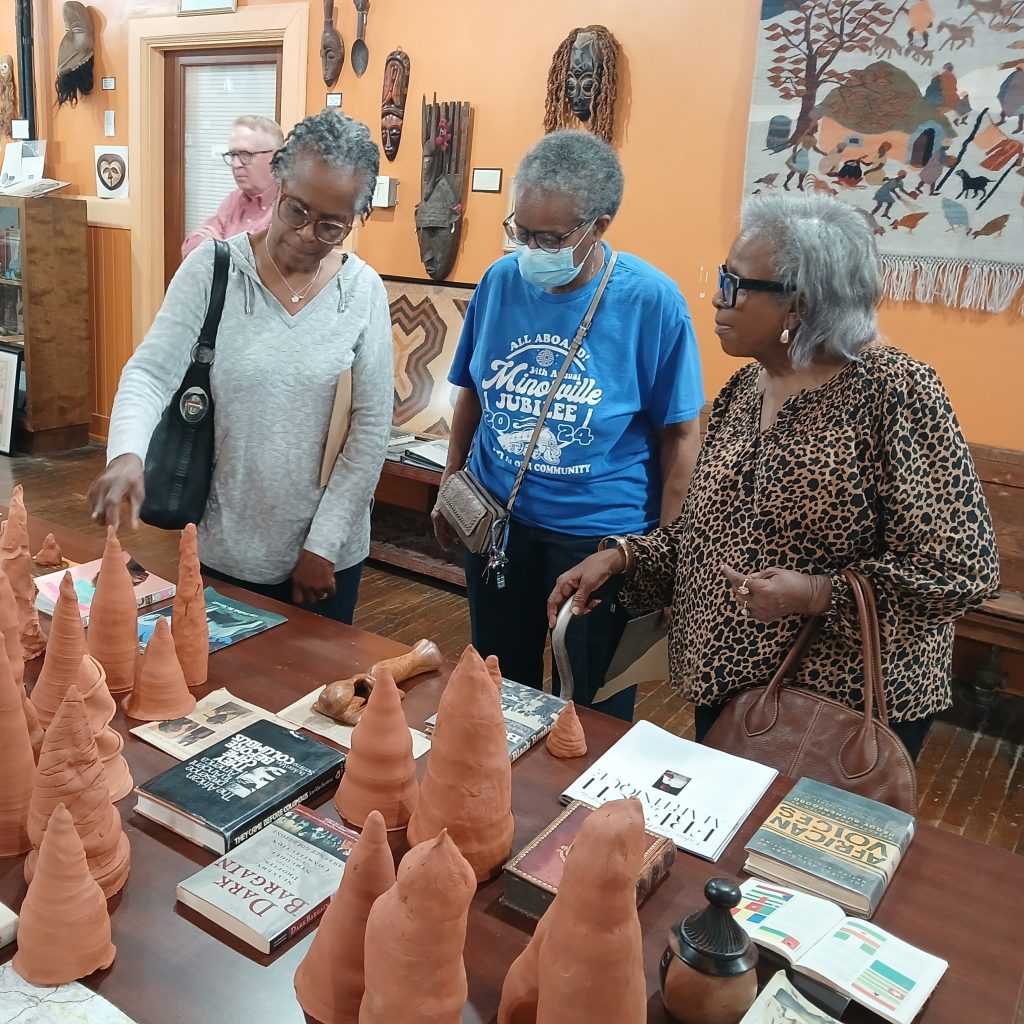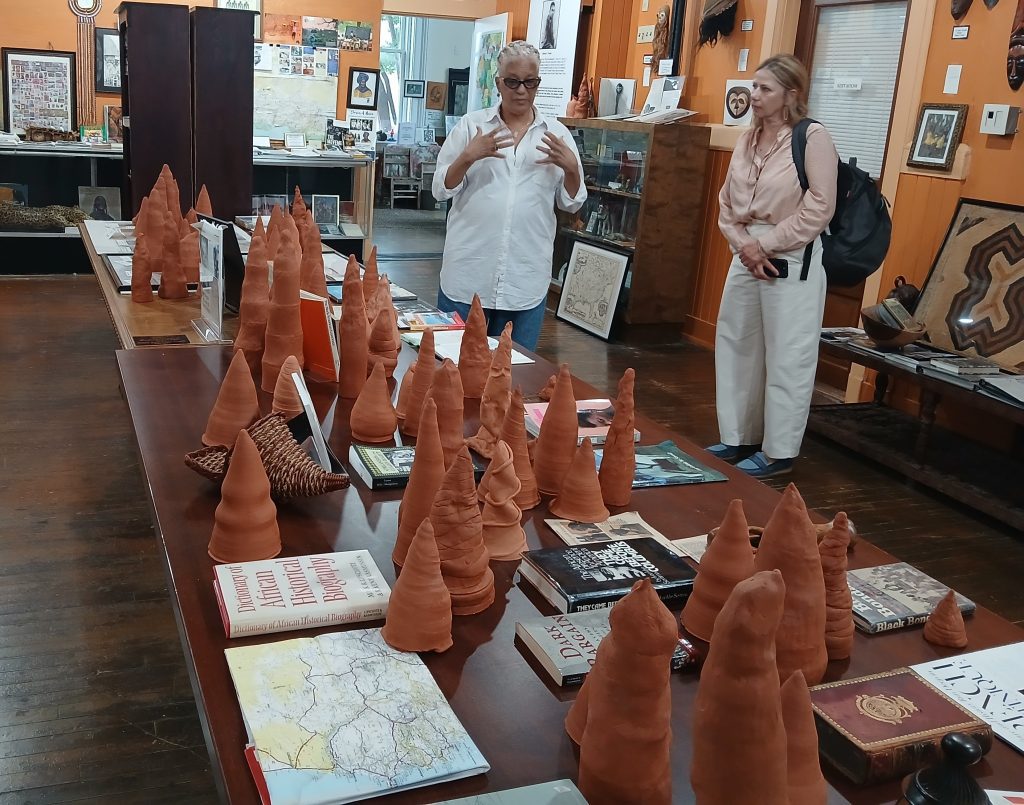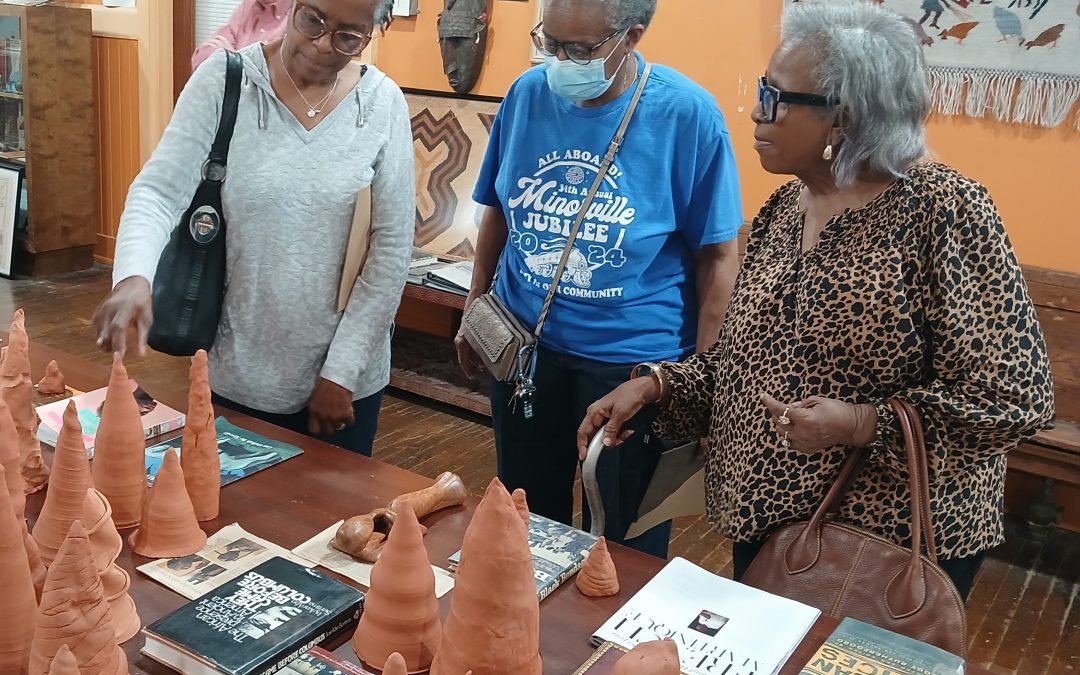
The Natchez Museum of African American History and Culture recently hosted the Cypress Knees exhibit presented by Woven Wind. Viewers of the exhibit’s clay sculptures included, from left, Debbie Toles, Sue Harris, and Ruthie Smith.
Members of the Woven Wind project used clay sculptures of cypress knees Friday, April 25, to highlight the history of the Toles family and their enslaved ancestors at Monmouth.
An exhibit of the cypress knees was featured for one day at the Natchez Museum of African American History and Culture. The knees were also placed on the grounds of Monmouth near a pond, said Nashville-based curator Courtney Adair Johnson.
“The clay objects, which symbolically carry the voices of the enslaved, will dissolve with the landscape over time to memorialize the site of the family’s painful history,” Johnson said, adding the unfired pieces of art will simply melt into the ground.
Some of the sculptures will be donated to the museum and Monmouth, she said.
Melisande Short-Colomb, research and community engagement associate at the Laboratory for Global Performance and Politics at Georgetown University, said nobody can really explain the purpose of the cypress knees in nature.
“They don’t grow into trees, but they are part of the network, the eco system, and the environment of the cypress swamp,” she said. “They connect all of the trees.”
Short-Colomb spoke about the cypress knees at the museum. She was joined by Vesna Pavlović, the Paul E. Shwab Chair in Fine Arts Professor of Art at Vanderbilt University.
“Part of what scientists believe is the cypress roots are in the water,” Short-Colomb said. “The knees come up to get some air and store water in periods of draught when the water may recede or go down when it doesn’t rain. Because of the cypress knees, the cypress trees continue to have a source of water. We chose the knees as a representative of the continuity of family through time.”
“The connection between the cypress knees and the trees shows the connectivity of a family,” said Bobby Dennis, director of the museum. “Each knee is attached to a tree. They all have the same resource as that tree, yet they’re all different.”
Furthermore, Short-Colomb said, the cypress knees sculpture is an artistic representation of the region. “The trees themselves hold the memory of everything that has happened there. The soil, the water, all of that is a memory that lives in the environment all over Natchez.”

Woven Wind representatives Melisande Short-Colomb, left, and Vesna Pavlović, discuss the clay sculptures of the Cypress Knees exhibit held April 25 in Natchez.
Short-Colomb said Natchez was the richest city in America for 90 years, and the remnants of memory remain in the environment, even though the cycles of humanity continues to change. “One day we’re born, and one day we die. The environment of the earth contains all of us. It receives all of us,” she said.
Short-Colomb said their work as Woven Wind “was connecting the archives of John A. Quitman, who was an enslaver, a human trafficker, to descendants of a complete and full name mentioned in the archives of the Quitman family.”
Their aim, she said, was to connect the living descendants to their ancestor, Frank Toles, who was mentioned in the archives. The archives are held in the University of the South in Sewanee, Tennessee.
According to Pavlović’s website, Woven Wind is a multi-layered research project drawing from artistic translations of the Lovell Quitman archive, which includes extensive Quitman Plantation records and photographs of the Civil War era.
The creation of the cypress knees involves the use of clay as a community activity, said Short-Colomb. The work is done by people who are not professional potters.
“Those knees are part of a multi-disciplinary art installation that includes the film of the Toles family, painted art work, a portfolio of photographs, and original music composed for the film and was performed in Nashville, she said.

